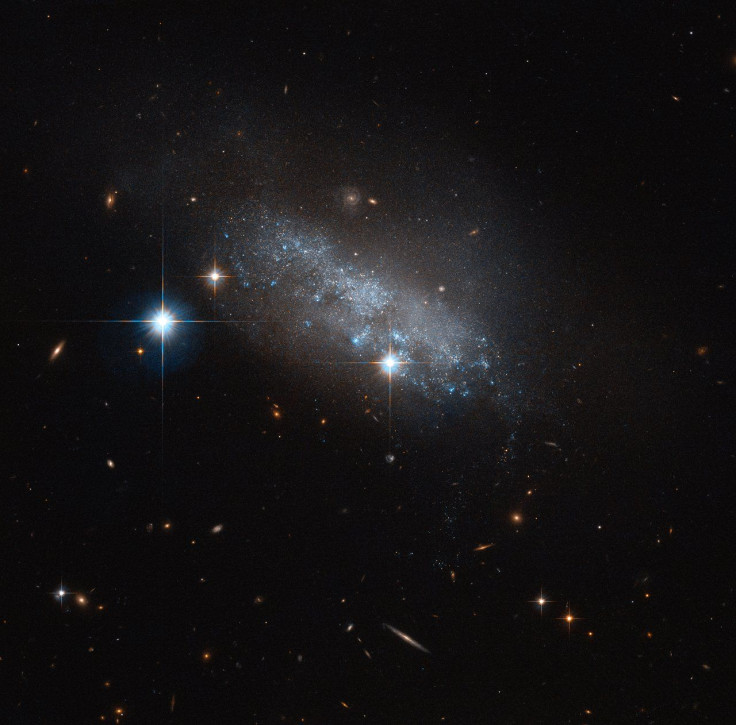Hubble Space Telescope Photographs IC 3583 — A Distant Type II Irregular Galaxy

Nearly 30 million light-years from Earth, in the direction of the constellation Virgo, lies an irregular galaxy named IC 3583. On Friday, NASA and the European Space Agency (ESA) released an image of the galaxy captured by the Hubble Space Telescope — one that reveals that despite its lack of any discernable structure, IC 3583 has a bar of stars running through its center.
Astronomers believe IC 3583 is a Type II irregular galaxy — one that was created as a result of a gravitational interaction with another nearby galaxy.
“Type I's are usually single galaxies of peculiar appearance. They contain a large fraction of young stars, and show the luminous nebulae that are also visible in spiral galaxies,” the ESA explained in a statement accompanying the image. “Type II irregulars include the group known as interacting or disrupting galaxies, in which the strange appearance is due to two or more galaxies colliding, merging or otherwise interacting gravitationally.”
Astronomers believe that something similar may have happened with IC 3583, which is gravitationally interacting with Messier 90 — an intermediate spiral galaxy located roughly 60 million light-years away.
“Together, the duo form a pairing known as Arp 76,” the ESA said. “It’s still unclear whether these flirtations are the cause of IC 3583’s irregular appearance — but whatever the cause, the galaxy makes for a strikingly delicate sight in this NASA/ESA Hubble Space Telescope image, glimmering in the blackness of space.”
The Hubble Space Telescope was launched aboard NASA’s space shuttle Discovery on April 24, 1990. Since then, it has not only captured an unimaginable number of truly spectacular nebulae and galaxies, it has also peered back over 13 billion years to look at our cosmos in its infancy, giving us, as NASA aptly put in an earlier statement, “a front row seat to the awe inspiring universe we live in.”
© Copyright IBTimes 2024. All rights reserved.












